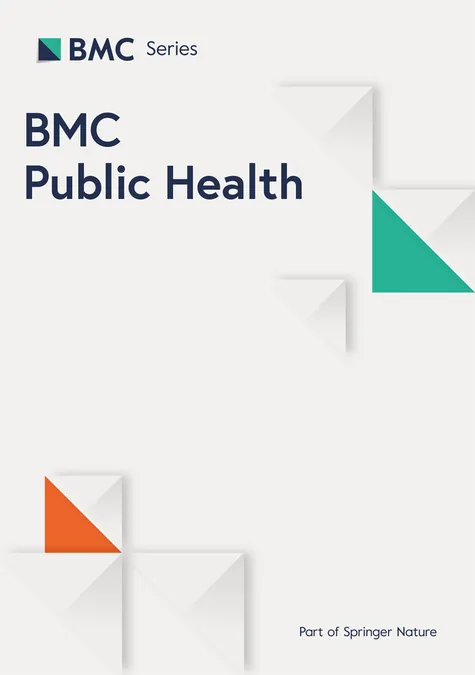
Harnessing Innovative Technologies and Animal Models to Unravel Shigella Infection Mechanisms
2025-01-20
Author: Wei Ling
Understanding Shigella Infections
Shigella is a group of bacteria that lead to shigellosis, a highly contagious intestinal infection characterized by diarrhea, fever, and abdominal discomfort. According to the Centers for Disease Control and Prevention (CDC), approximately 450,000 cases of shigellosis are reported every year in the United States alone, with children under five being particularly vulnerable. Globally, the prevalence is even more alarming, particularly in low-resource settings where sanitation is inadequate.
The Shigella genus comprises four main species: S. sonnei, S. flexneri, S. boydii, and S. dysenteriae, with S. sonnei being the most commonly identified in North America. Although most cases are not life-threatening, S. dysenteriae type 1 can lead to serious complications, including severe diarrhea and even death, especially in young children and immunocompromised individuals.
Revolutionary Technologies in Shigella Research
Recent advancements in life sciences are transforming our approach to understanding Shigella infections. Here are some key technologies making a significant impact:
1. Organ-On-Chip Technology: This innovative platform allows scientists to create miniature replicas of human organs, providing a controlled environment to study the effects of infections and potential responses to treatments. Recent studies using organ-on-chip models have debunked previous notions about how S. flexneri invades intestinal cells, revealing that mechanical forces can facilitate the bacteria's invasion more than previously understood. This ground-breaking technology paves the way for more effective drug development and personalized medicine.
2. Bacterial Genome Sequencing: Genome sequencing is playing a vital role in identifying and classifying Shigella strains. Research from the Pasteur Institute has improved our surveillance capabilities, allowing for precise tracking of bacterial mutations and spread. This method is crucial for understanding how Shigella transmits and adapts, especially in food safety contexts, enhancing our ability to prevent outbreaks before they occur.
3. High-Resolution Microscopy: Enhanced imaging techniques are enabling researchers to observe the interactions between Shigella and host cells in greater detail than ever before. High-resolution microscopy combined with artificial intelligence tools is uncovering new insights into how Shigella manipulates host cell machinery to establish infection, potentially informing new therapeutic avenues.
4. GMMA Vaccine Platform: Generalized Modules for Membrane Antigens (GMMA) represent a breakthrough in vaccine development, offering a feasible pathway for creating effective immunizations against Shigella. The Shigella sonnei 1790GAHB vaccine has shown promising efficacy in clinical trials, and its development could significantly reduce the incidence of shigellosis, particularly in regions where it is endemic.
Insights from Animal Models
To complement these technological advancements, researchers have utilized various animal models to explore the progression and mechanisms of Shigella infections:
1. Zebrafish: Zebrafish are valuable for studying immune responses, and a recent study indicated that genetically modified zebrafish larvae improved their ability to clear Shigella infections. Their unique immune systems offer insights that can be pivotal for vaccine development.
2. Mice: Mice continue to be a staple model in infectious disease research, revealing significant findings about the role of inflammasomes in protecting against Shigella. Creative modifications allow researchers to simulate human shigellosis in these animals, providing essential information for potential therapies.
3. Guinea Pigs: These rodents serve as excellent models for mimicking human infection symptoms. A recent experiment demonstrated the influence of vitamin C levels on the severity of Shigella infections, providing vital information about how dietary factors could impact susceptibility.
4. Combined Vaccine Studies: Trials involving multiple animal species, including mice, guinea pigs, and rabbits, are crucial for evaluating vaccine efficacy comprehensively. A recent study highlighting the success of a multivalent vaccine shows promise for combatting diverse Shigella strains.



 Brasil (PT)
Brasil (PT)
 Canada (EN)
Canada (EN)
 Chile (ES)
Chile (ES)
 Česko (CS)
Česko (CS)
 대한민국 (KO)
대한민국 (KO)
 España (ES)
España (ES)
 France (FR)
France (FR)
 Hong Kong (EN)
Hong Kong (EN)
 Italia (IT)
Italia (IT)
 日本 (JA)
日本 (JA)
 Magyarország (HU)
Magyarország (HU)
 Norge (NO)
Norge (NO)
 Polska (PL)
Polska (PL)
 Schweiz (DE)
Schweiz (DE)
 Singapore (EN)
Singapore (EN)
 Sverige (SV)
Sverige (SV)
 Suomi (FI)
Suomi (FI)
 Türkiye (TR)
Türkiye (TR)
 الإمارات العربية المتحدة (AR)
الإمارات العربية المتحدة (AR)